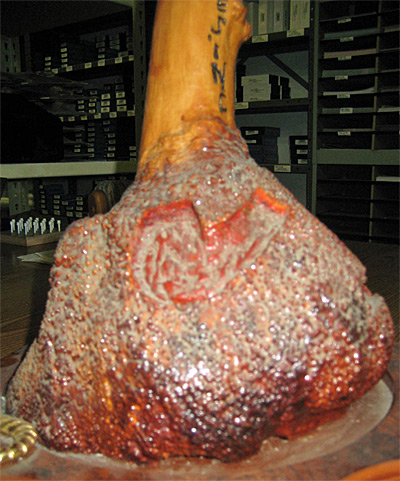
The most popular material for making tobacco smoking pipes is by far—Briar. The Comoy family started making briar pipes in Saint-Claude, France in 1856 when they found that it was far superior to other woods and clays being used at the time. There are other woods used to make smoking pipes, but briar is considered the best because of several qualities—resistance to burning, density that withstands moisture produced from smoking, porosity that reduces heat, and the flavor that the wood itself adds to the tobacco in some cases. Briar comes from the Heath Tree, which looks more like a shrub than a tree, and is actually a flowering plant. It is small and grows in the Mediterranean Basin, coming from countries such as; Spain, France, Algeria, Morocco, Italy, and Greece.
The briar wood actually comes from the root system of the plant. There is a large roundish burl that is formed underground, below the trunk, from which the individual roots then spread out. It is this burl that is harvested, boiled and cut into rough pieces of wood called ebauchons. The ebauchons, or briar blocks eventually get delivered to factories or individual pipe makers to be crafted into actual pipes.
The Achaiki Amadeus briar block processing plant was kind enough to provide this 10-minute video that shows what happens with the burls after harvest.
[HTML1]


















Pretty cool. Thanks!
That was pretty cool. Great post!
Yes very interesting and great soundtrack on that video too. A lot of work goes into a briar pipe even before the raw material makes it to the carver.
David Gilmour is still one of the Very Best Guitarists, ever.
And the video was extremely interesting, as well.
Great vid, wish there were more like it.
Wow, that is super-interesting. Many thanks to Achaiki Amadeus for sharing this part of the story of the journey of the pipe.
OSHA does not approve !
Preparing the wood for the carver is surprisingly involved and labor intensive. Thanks for providing this background info.
Great Video…It goes quite well with tonight’s pipepodcast.
Very enjoyable, and all the more when accompanied by some Floyd! Thanks.